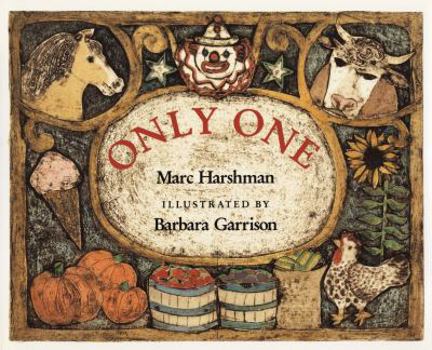Only One
Select Format
Select Condition 
Book Overview
A novel counting book, centered around a county fair and featuring delightful illustrations, shows how single things can combine to make something unique, new and utterly wondrous. This description may be from another edition of this product.
Format:Hardcover
Language:English
ISBN:0525651160
ISBN13:9780525651161
Release Date:May 1993
Publisher:Dutton Books for Young Readers
Length:32 Pages
Weight:0.05 lbs.
Dimensions:0.4" x 10.5" x 8.5"
Age Range:4 to 8 years
Grade Range:Preschool to Grade 3
Customer Reviews
2 ratings
Lots of possibilities for math.
Published by Thriftbooks.com User , 19 years ago
I also disagree with the editorial review. I don't see a need for all of the one-to-group relationships to be structured in the same way. Almost all of the situations described in the book (4 wheels on a wagon, 12 eggs in a dozen, 10 cents in a dime) can be used as a take off point to write problems that involve multiple groups (what if there were 10 wagons? 40 eggs?) that help children develop what I think is the central mathematical idea of the book: that many things can be thought of as one thing. This idea, by the way, is the one that is the key to base-10 understanding. I've used this book with second graders and the differences that the editorial reviewer points to did not make a big difference in the way the children responded to the problems I posed.
Intro to quantities that make up sets
Published by Thriftbooks.com User , 19 years ago
I disagree with the editorial review that calls this disorganized. Each page has a statement about individual units that make up a set, and an opposite page with artwork demonstrating the idea. While there are number quantities that are uncountable "There may be 50,000 bees, but there is only one hive" - the majority are simpler to comprehend: "There may be 9 players, but there is only one team." In fact, the book is organized to start with a million stars in the sky, to progressively smaller quantities - 7 peas in pod, 4 wheels to one wagon, etc. - to end with "there is only one me and only one you." Great picture book for ages 3 to 7





